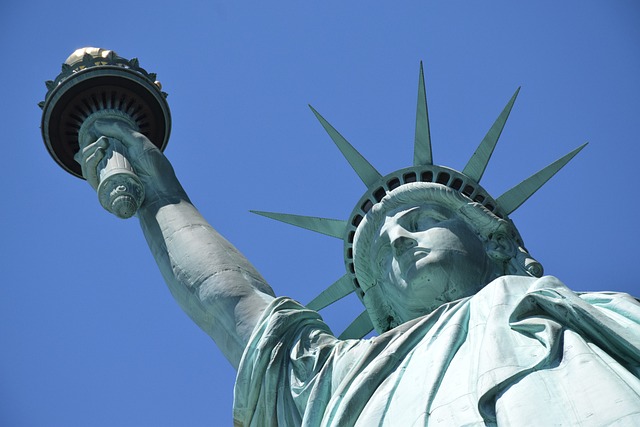 Modernism is a cultural, aesthetic and architectural phenomenon that can sometimes be oversimplified as primitivism, cubism and the search for something different. At least that’s how it started. Primitivism can be seen in Picasso’s portraits, which were inspired by African masks, cubism can of course also be seen in Picasso’s work, as well as everywhere in the streets, because modern architecture is often inspired by simple geometric shapes. And we are all by now tired of the glass boxes being built all over the world. Whereas early modernist architecture was a pastiche of Japanese aesthetics.
Modernism is a cultural, aesthetic and architectural phenomenon that can sometimes be oversimplified as primitivism, cubism and the search for something different. At least that’s how it started. Primitivism can be seen in Picasso’s portraits, which were inspired by African masks, cubism can of course also be seen in Picasso’s work, as well as everywhere in the streets, because modern architecture is often inspired by simple geometric shapes. And we are all by now tired of the glass boxes being built all over the world. Whereas early modernist architecture was a pastiche of Japanese aesthetics.
Many argue that modernism was a tribute to industrialism. Large windows were built because they could, and kitchens were small, as most food had to be semi-processed or ready-made. The modern man did not need to cook. Food lifts were also installed in many of these houses built in the 1930s. Functionalism is another term, although much of this is not functional at all, especially the famous flat roofs, which require constant maintenance.
It is curious, however, that the main phases of industrialism were already over when modernism was born. Industrialism will always be remembered as a 19th century phenomenon. An era in which romanticism, mysticism, rationality, nationalism and socialism flourished – often in harmony with brick-built factories and ornate chimneys spewing out black smoke.
According to British historian Roger Griffin, modernism can be defined as a broad cultural, social, or political initiative, sustained by the ethos of “the temporality of the new”. Modernism sought to restore, Griffin writes, a “sense of sublime order and purpose to the contemporary world, thereby counteracting the (perceived) erosion of an overarching ‘nomos’, or ‘sacred canopy’, under the fragmenting and secularizing impact of modernity.” Therefore, phenomena apparently unrelated to each other such as “Expressionism, Futurism, vitalism, Theosophy, psychoanalysis, nudism, eugenics, utopian town planning and architecture, modern dance, Bolshevism, organic nationalism – and even the cult of self-sacrifice that sustained the hecatomb of the First World War – disclose a common cause and psychological matrix in the fight against (perceived) decadence.” All of them embody bids to access a “supra-personal experience of reality”, in which individuals believed they could transcend their own mortality, and eventually that they had ceased to be victims of history to become instead its creators
Modernism is all and nothing: a veritable word salad or the ideology of the losers and the abandoned? Those who survived the slaughter of the world wars, ashamed of man’s evil, in total oblivion and denial that he can also create good. The ever new. The man without roots. The stripped-down, clean and simplified. Futurism when the future is already here. The blank page, the unwritten book.
Aesthetic freedom, as long as you don’t try to build Corinthian columns or neo-Gothic shopping centres. Because history, our heavy old baggage, is not something you want to carry around. Dangerous memories from dangerous times. So ugliness becomes the last refuge. And many of our city centres look more like prisons, or terrariums for pale, stressed-out, smarphone-staring people.
The question is, how long can we remain inventors of the ever-new? After all, glass scrapers are not new or even modern anymore, nor are “functionalistic” houses or modern art, which will soon be 100 years old. Most things have aged badly. Perhaps modernism is not supposed to age? After all, what is constantly new is constantly new, at least in the mind, but hardly in reality. Steel, concrete and glass wear and tear just like any other material.
Sometimes we talk about postmodernism or late modernism. I don’t really know what is meant. I thought I understood, at least in the past, but not anymore. Modernism has no end point, perhaps it is the best approach to Marx’s idea of the “end of history” ever made, to introduce a philosophy based on a permanent future, because in fact it can never end.
Let us now take a different approach to the phenomenon of modernism. Apart from the purely aesthetic and philosophical challenges, there are also economic aspects of art, architecture and theory that only a select few understand.
The art world produces, buys, values and sells. It works like a medieval guild, everything is managed from within, only the right people are allowed in, and there are of course huge sums to be earned by those who both sell and value. Architecture is not exactly the same, but here too there is a guild system and a taste police that ensures that only the right architects can realise their designs. Then the construction mafia takes over, often funded by taxpayers, and everyone involved takes their fair share. Have you ever heard of a public construction project staying on budget?
So, it’s not just about ugly and incomprehensible aesthetics, there is of course always some kind of financial gain behind such movements. And for those who have bought an expensive abstract painting or built a glass scraper, it is of course important that the prevailing taste continues to prevail, otherwise their investment would lose value. And it is important that the prevailing taste is underpinned by various theories and philosophies, also deliberately obscured to outsiders.
But hasn’t that always been the case, hasn’t the art world always been exclusive, interpreted and understood by a few?
No, there have been higher values, where objective beauty has played a far greater role. And where art would have no chance if it did not fulfil certain objective criteria. By placing art in a vacuum, where only a select clergy can interpret and evaluate it, total control has been created. In economics, it is often said that scarcity creates value; here, a kind of artificial scarcity has been created, where the chosen ones point out the works of art that pass the eye of the needle, while the rest are worthless kitsch.
In many ways, what I am describing is a new class-based society, consisting of a small in-group and an increasingly large out-group; and the comparison with Hans Christian Andersen’s tale of the Emperor’s New Clothes is being made more and more often. The fact that the large critical group cannot make its voice heard is because the smaller group holds the capital, that they have the power. And their power is based on maintaining the prevailing arrangement at all costs. It is of course a fragile system adapted to an effeminate society where order, authority and a sense of duty are no longer in vogue. Where culture is held together by decadent red wine cartels through verbal abuse, ostracism and humiliation.







